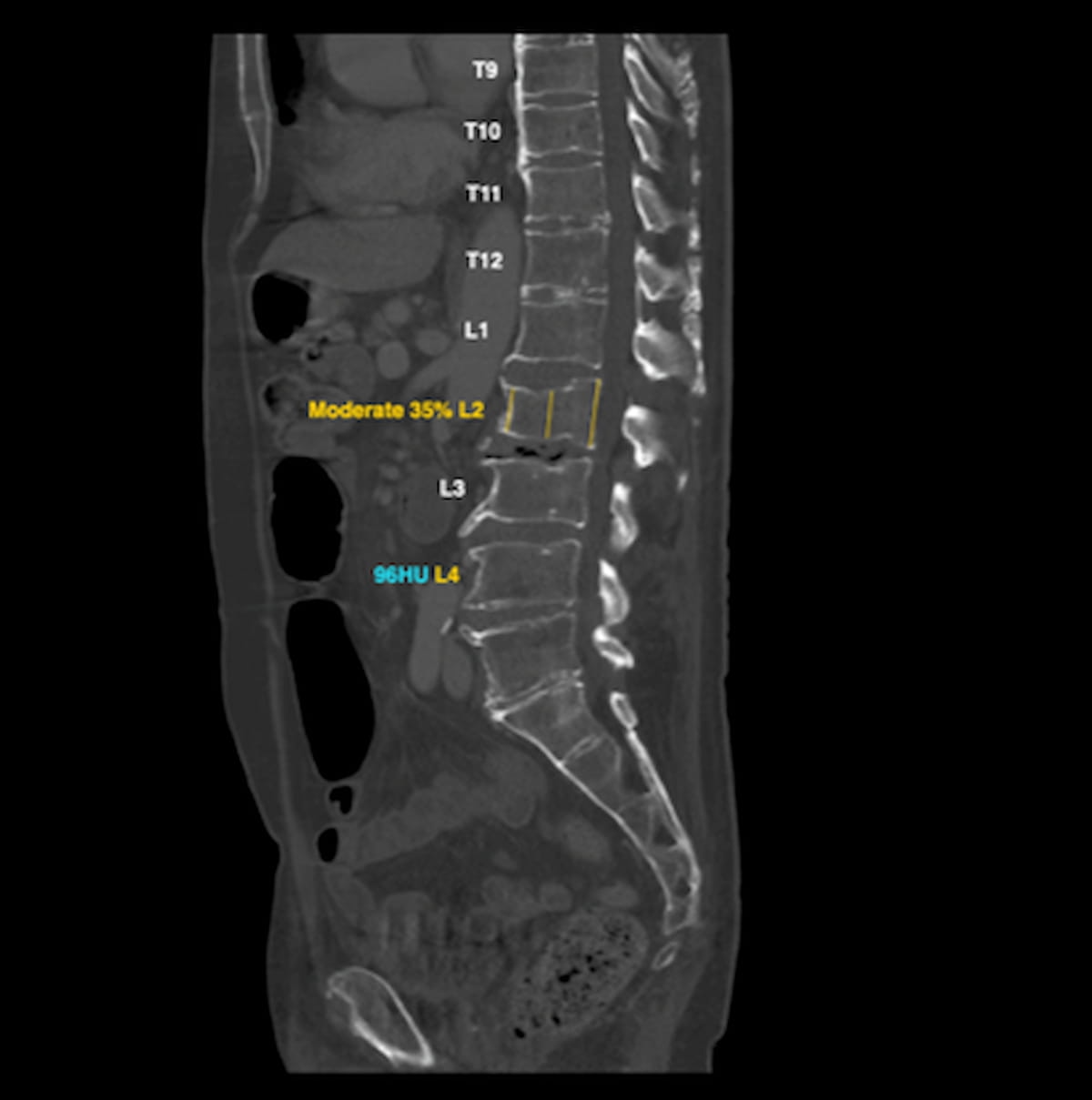Nanox Adds AI Applications to Teleradiology Platform for CT Second Opinions
Facilitating additional consultation on chest and abdominal CT scans, the Second Opinions teleradiology platform now features FDA-cleared AI tools for cardiac, bone and liver assessments.
In an attempt to enhance connections between patients, radiologists, and other subspecialty providers, Nanox has added three artificial intelligence (AI) tools to its Second Opinions teleradiology platform for chest and abdominal computed tomography (CT) scans.
The three AI tools, HealthCCSng, HealthOST and HealthFLD, have previously garnered 510(k) clearance from the Food and Drug Administration (FDA).
HealthOST, which can identify low bone mineral density (BMD) and aid in the detection of compression fractures, is one of three FDA-cleared AI tools that have been added to Nanox's Second Opinions teleradiology platform for chest and abdominal CT scans. (Image courtesy of Nanox.)

Nanox said HealthCCSng enables detection of coronary artery calcium, which can be an early indicator of coronary artery disease (CAD). Other integrated AI-powered tools include HealthFLD, which may facilitate detection of fatty liver disease through liver density measurements, and HealthOST, which can identify low bone mineral density (BMD) and aid in the detection of compression fractures, according to Nanox.
“The integration of Nanox.AI’s solutions into the Second Opinions service will help empower radiologists and other healthcare providers by providing them with advanced AI tools that aim to improve patient outcomes,” noted Erez Meltzer, the chief executive officer of Nanox. “We will continue exploring opportunities to leverage our AI technology to promote accessible early diagnosis and preventative management.”
New AI-Enabled Portable Ultrasound May Facilitate 50 Percent Reduction in Cardiac Imaging Scan Time
March 28th 2025Artificial intelligence (AI)-powered measurement capabilities provide key features with the Compact Ultrasound 5500CV device, which will be unveiled at the American College of Cardiology (ACC) conference.
New Collaboration Offers Promise of Automating Prior Authorizations in Radiology with AI
March 26th 2025In addition to a variety of tools to promote radiology workflow efficiencies, the integration of the Gravity AI tools into the PowerServer RIS platform may reduce time-consuming prior authorizations to minutes for completion.
Predicting Diabetes on CT Scans: What New Research Reveals with Pancreatic Imaging Biomarkers
March 25th 2025Attenuation-based biomarkers on computed tomography (CT) scans demonstrated a 93 percent interclass correlation coefficient (ICC) agreement across three pancreatic segmentation algorithms for predicting diabetes, according to a study involving over 9,700 patients.
Can Photon-Counting CT be an Alternative to MRI for Assessing Liver Fat Fraction?
March 21st 2025Photon-counting CT fat fraction evaluation offered a maximum sensitivity of 81 percent for detecting steatosis and had a 91 percent ICC agreement with MRI proton density fat fraction assessment, according to new prospective research.